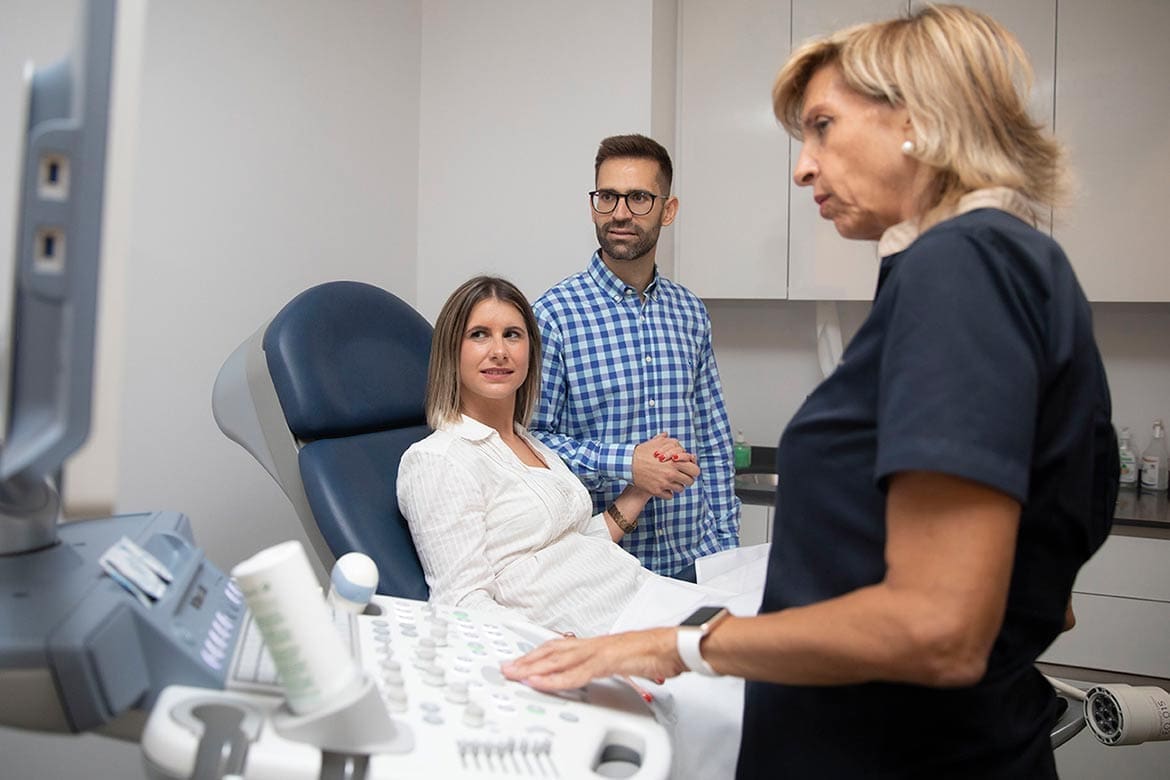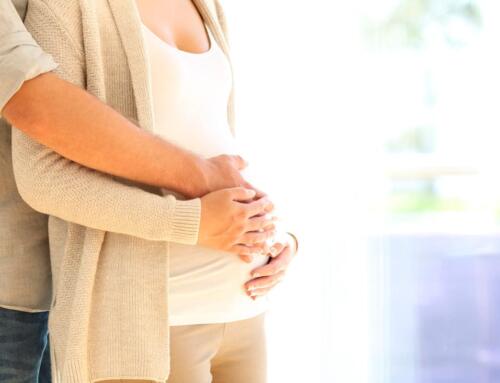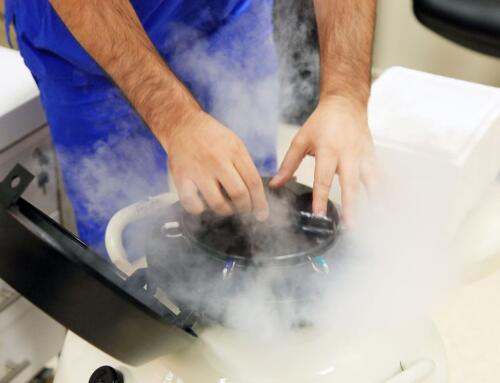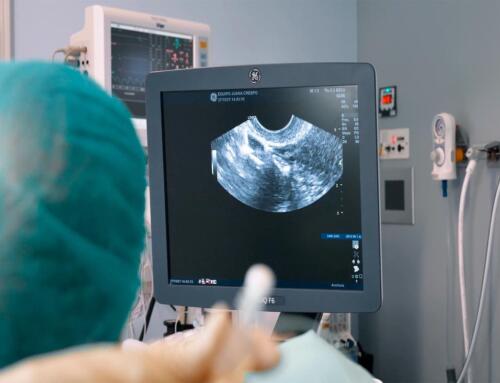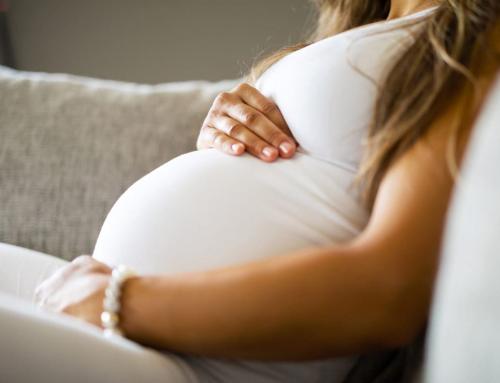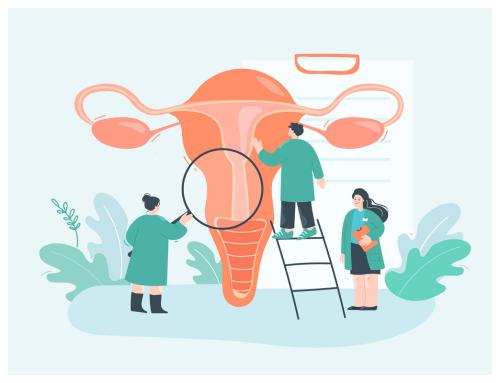Unlike men, who can produce sperm throughout their lives, women are born with a certain number of eggs. This number cannot increase despite medical advances and will therefore gradually decrease over the years.
Ovarian reserve is the number of eggs a woman has at a specific time. Although it is not the only relevant factor in determining the chances of becoming pregnant, it is directly related to it.
What are antral follicles?
Antral follicles are small structures contained in the ovaries. They are shaped like sacs of fluid and contain, in turn, the immature ova or oocytes.
At the beginning of each menstrual cycle, the ovaries recruit several antral follicles. One of them will develop into a mature egg which, when the time comes, will be released at ovulation and wait in the fallopian tube to be fertilised by a sperm. At this point, the remaining antral follicles receive a hormonal message to disappear.
If there is no pregnancy, shortly before menstruation, another cohort of antral follicles will appear to restart the cycle.
How do we count antral follicles?
Antral (resting) follicles are shaped like a small sphere filled with fluid. Although small in size, they are visible at the beginning of the menstrual cycle, especially on days 3-5.
To find out how many antral follicles a woman has (and therefore how many oocytes she may have for ovarian puncture during IVF treatment), we will perform a vaginal ultrasound. This test, along with others explained in this article, allows our gynaecologists to check the quantity and quality of the ovarian reserve.
The test is very simple (similar to a routine gynaecological check-up), completely painless, and does not require any type of anaesthesia. It is carried out in an examination room at the clinic and takes only a few minutes.
During this time, our doctors will observe the antral follicles recruited by the ovary and count the ones measuring between 2 and 10 mm, which are the ones which are likely to mature and be fertilised.
What is the usual number of follicles?
A woman with a normal ovarian reserve has between 10 and 20 antral follicles in each menstrual cycle, although this number can vary each month.
If the number is less than 10, our medical team will consider the woman’s ovarian reserve to be low. In these cases, it is usual to recommend that the patient undergo IVF treatment to achieve pregnancy, although it will always depend on each case and particular circumstances.
It is possible, for example, that the mother-to-be not only has a low ovarian reserve, but that the oocyte response to hormone treatment is also low (what we call “low responders”). In these cases we will carry out a strategy based on:
-
- On the one hand, applying a stimulation protocol that not only adapts to the patient’s circumstances, but also trying to select the optimal cycle to obtain the best oocyte. This involves a medium-term strategy, but we will ensure that the gamete has the best quality for fertilisation and future embryo implantation.
- Together with the application of a personalised stimulation, we will establish recommendations based on an adequate diet and healthy exercise that we can complement with: vitamins, antioxidants or the intake, for example, of coenzyme Q10. These recommendations, together with an appropriate stimulation protocol, can significantly improve the results of the treatment.
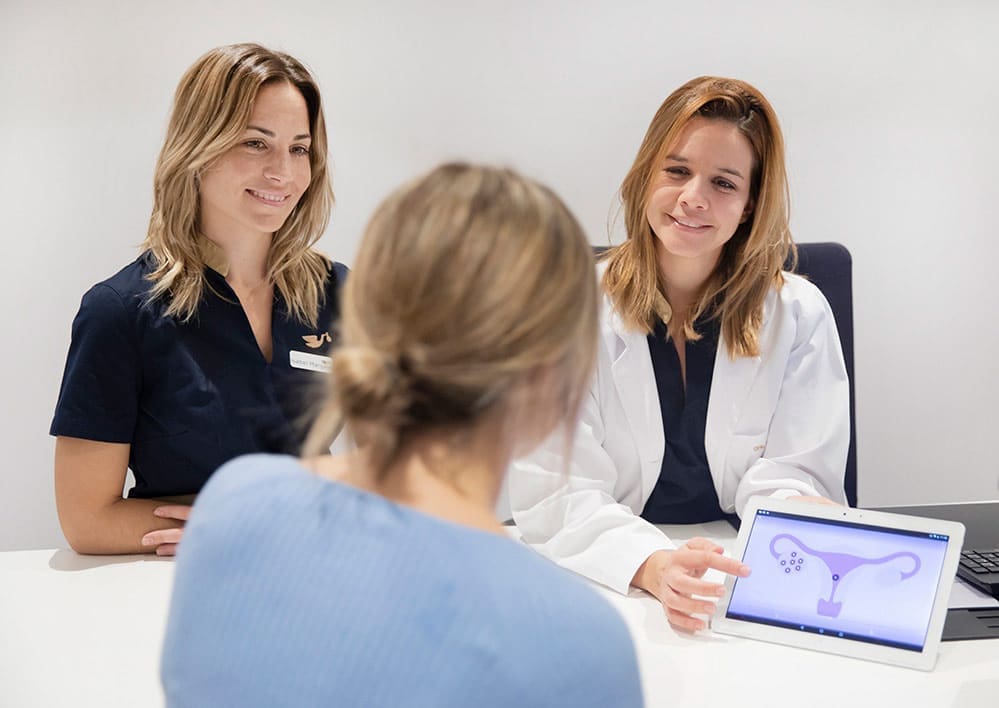
What other cases are there?
If the number of antral follicles is very low and the woman is over 40 years of age (considered late motherhood), it may be necessary to resort to egg donation treatment.
However, before recommending egg donation treatment or embryo implantation, the doctor will carry out a preliminary study of the medical and reproductive history of the patient or couple. She will also request any complementary tests that she considers appropriate. And, finally, with all the information, she will decide, together with the patient, the best treatment option for gestation.
If, on the other hand, the opposite is the case and a woman’s antral follicle count is higher than 20, it is possible that there are ovulation problems related to polycystic ovary syndrome or excess prolactin in the blood (hyperprolactinaemia) that can have a negative effect on fertility.
In any case, having a low ovarian reserve does not mean that you cannot get pregnant. However, your ovaries may not respond optimally to ovarian stimulation medication. This is why we carry out a preliminary diagnosis to help us establish the most appropriate treatment strategy for you.
What is the purpose of the antral follicle count and in which cases is this test recommended?
The number or count of antral follicles is related to the oocyte reserve and ovarian function.
It is a very common fertility test in reproductive medicine that will help us to assess your health and chances of pregnancy.
In general terms, the antral follicle count serves to:
- Evaluate a woman’s ovarian reserve.
- Diagnose primary ovarian insufficiency.
- Help diagnose PCOS (polycystic ovary syndrome).
- Inform the mother-to-be about her fertility status in relation to her age (i.e. whether she has more or less than an average number of follicles compared to other women her age).
On the other hand, in assisted reproduction treatments, the antral follicle count will help us to predict the number of mature (dominant) follicles that can be stimulated and retrieved by follicular puncture. This information has a direct bearing on hormone treatment and IVF success rates.
Are there other tests to determine a woman’s ovarian reserve?
As mentioned above, the antral follicle count is not the only test to assess a woman’s ovarian reserve. There are other methods:
- One of them is to perform a blood test, between days 2 and 4 of the menstrual cycle, to check the presence of FSH (Follicle Stimulating Hormone) Hormone and the levels of oestradiol and LH hormone.
The former is responsible for stimulating oocyte maturation, while the latter is the oestrogen that activates the hormone LH (ludotropin), which triggers ovulation.
- Another method of measuring ovarian reserve is to determine the levels of anti-Müllerian hormone in the blood. This hormone is directly proportional to ovarian production: the higher the amount of hormone, the greater the ovarian reserve available.
It is important to emphasise that the anti-Müllerian hormone only provides information about the quantity of oocytes, but not about their quality.
When assessing a woman’s fertility and ovarian reserve, all these tests should be considered together. The first two (blood tests and vaginal ultrasound for antral follicle count) should be carried out at a specific time in the menstrual cycle, while the third (anti-Müllerian hormone levels) can be carried out at any time.
At Juana Crespo we are experts in the diagnosis and treatment of patients with low ovarian reserve. Do you have any questions about this treatment? Contact us and tell us about your case.


